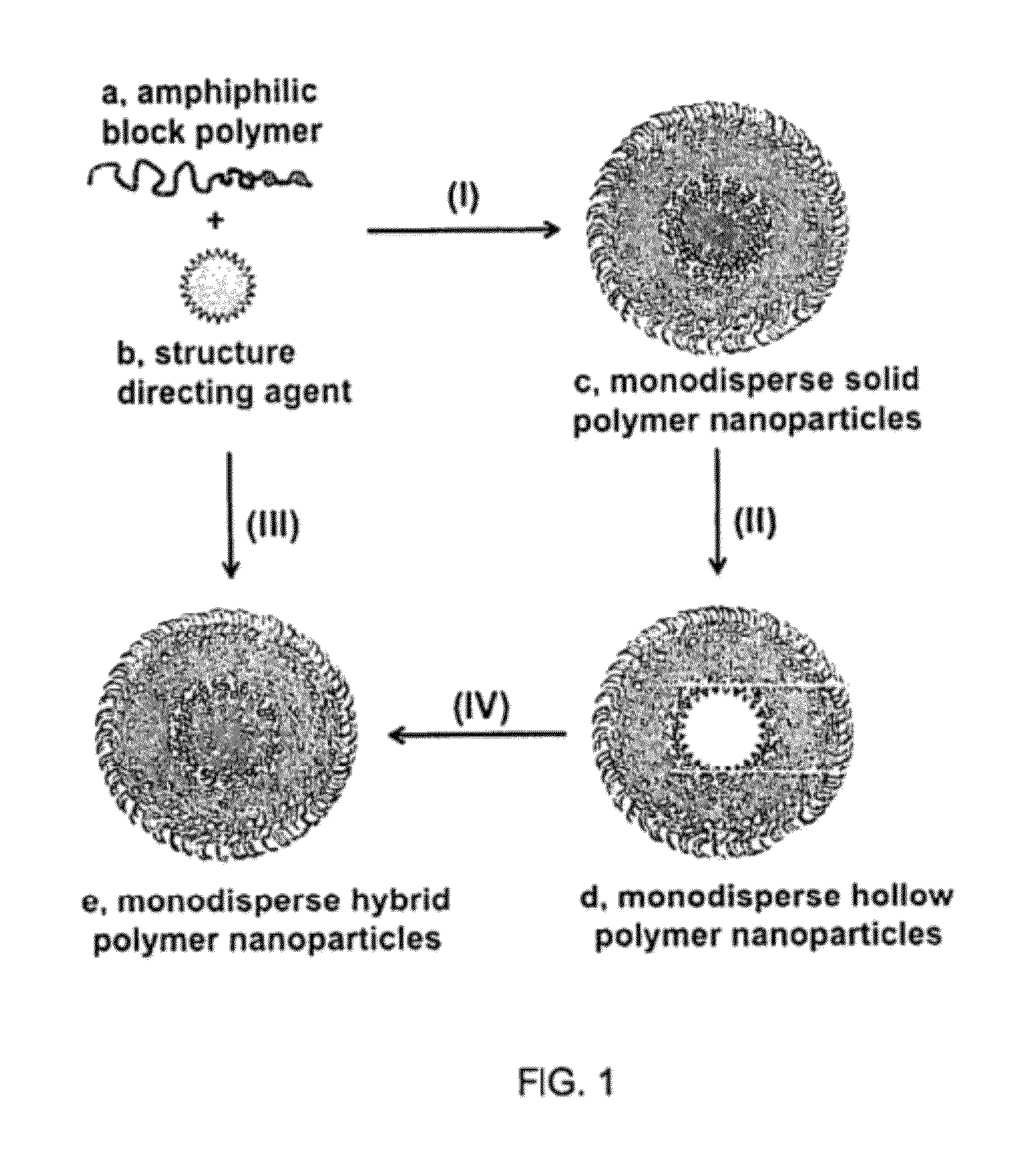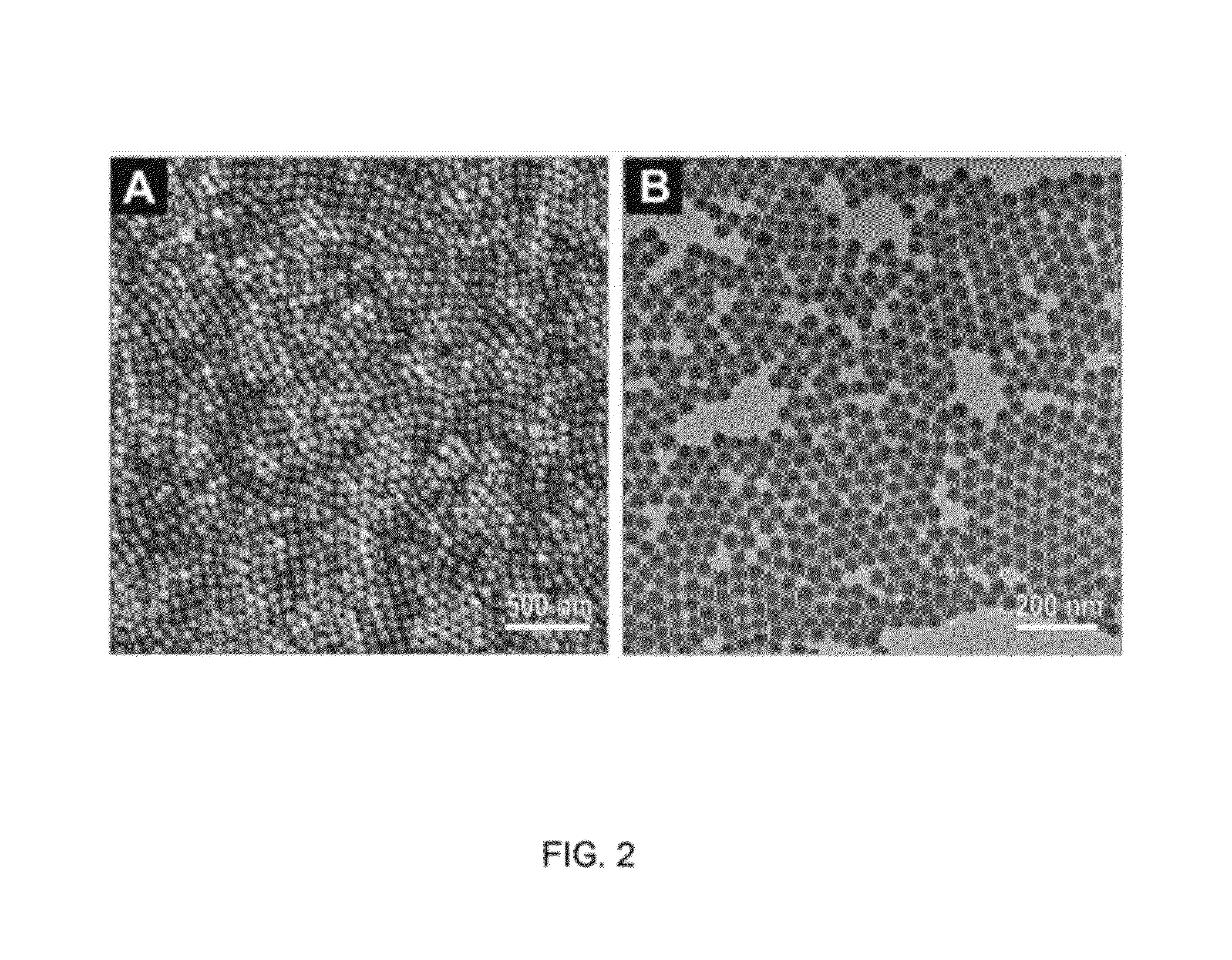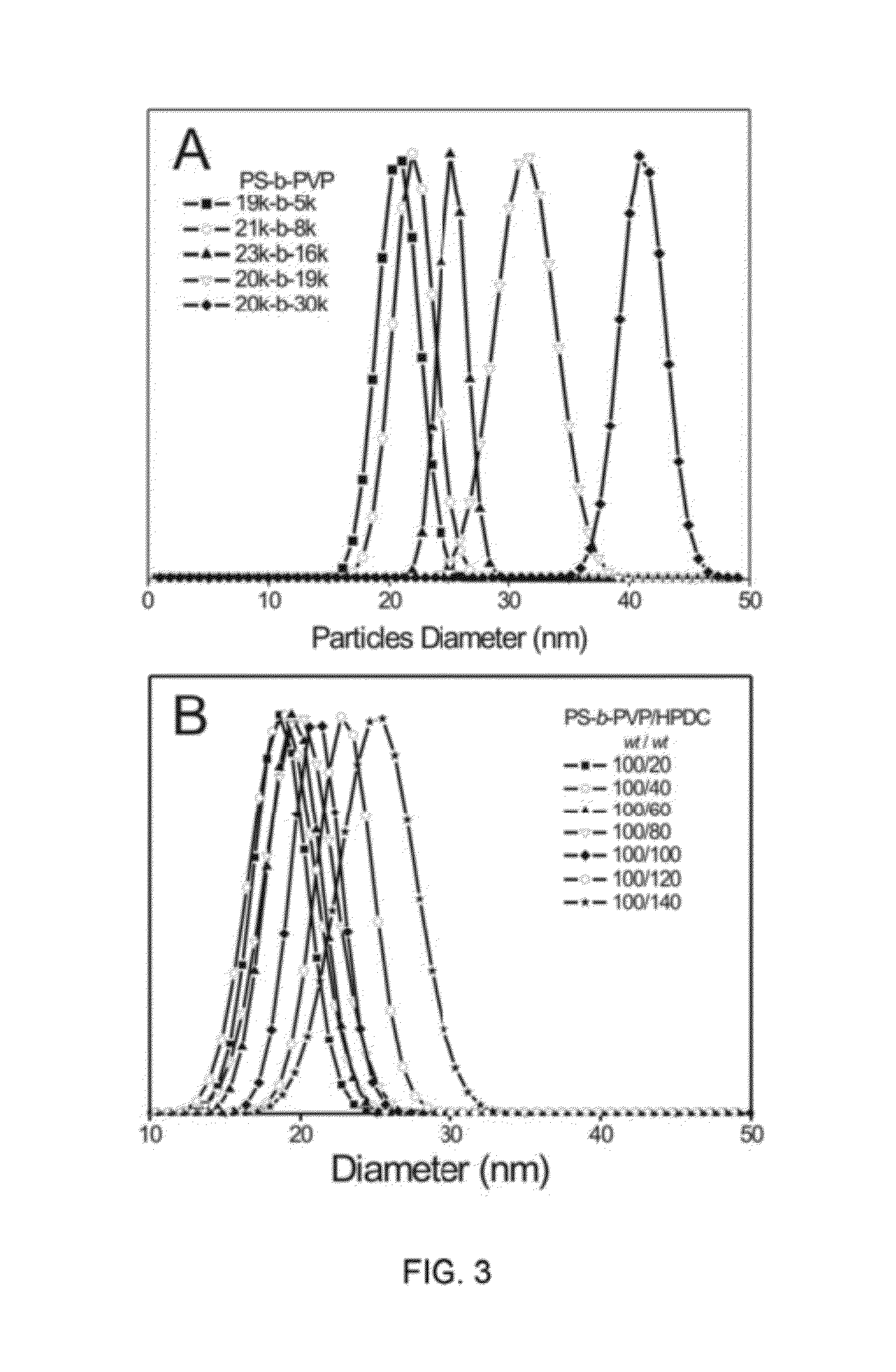Method of making monodisperse nanoparticles
- Summary
- Abstract
- Description
- Claims
- Application Information
AI Technical Summary
Problems solved by technology
Method used
Image
Examples
example 1
Synthesis of a General Spherical Solid Nanoparticles
[0023]A 2 ml dioxane containing 2 wt % PS19.9k-PVP29.4k was added into a 2 ml dioxane solution containing 2 wt % 8,13-Bis(1-hydroxyethyl)-3,7,12,17-tetramethyl-21H,23H-porphine-2,18-dipropionic acid. After stirring overnight at elevated temperature (50-70° C.), the nanoparticles were collected by centrifuging. To test thermal stability, the coating solution was heated to 180° C. for up to 10 hours in an autoclave and then passively cooled to room temperature. The resulting nanoparticles (see FIG. 2) can be re-dispersed into common solvents like toluene, chloroform, dioxane, and THF.
example 2
Synthesis of Hollow Nanoparticles
[0024]A 2 ml dioxane solution containing 2 wt % PS19.9k-PVP29.4k was added into a 2 ml dioxane solution containing 2 wt % 2-(4′-hydroxybenzeneazo)benzoic acid (HBBA). After stirring for 3 hours at elevated temperature, the nanoparticles were collected by centrifuging. At this stage, the nanoparticles are solid. Due to the monodispersity, the nanoparticles form ordered hexagonal arrays on a substrate. After removal of HBBA by ethanol wash, the nanoparticle become hollow nanoparticles (see FIG. 5).
example 3
Synthesis of Nanowires
[0025]A 2 ml dioxane solution containing 2 wt % PS5.3k-PVP58.0k-PS5.3k was added into a 2 ml dioxane solution containing 2 wt % 2-(4′-hydroxybenzeneazo)benzoic acid (HBBA). After stirring for 3 hours at elevated temperature, the nanoparticles were collected by centrifuging. The diameter of the one-dimensional wire is approximately 40-nm. The length is in the range of 1-5-μm. TEM imaging (FIG. 4) revealed the nanowire to be solid.
PUM
| Property | Measurement | Unit |
|---|---|---|
| Temperature | aaaaa | aaaaa |
| Temperature | aaaaa | aaaaa |
| Fraction | aaaaa | aaaaa |
Abstract
Description
Claims
Application Information
 Login to View More
Login to View More - R&D
- Intellectual Property
- Life Sciences
- Materials
- Tech Scout
- Unparalleled Data Quality
- Higher Quality Content
- 60% Fewer Hallucinations
Browse by: Latest US Patents, China's latest patents, Technical Efficacy Thesaurus, Application Domain, Technology Topic, Popular Technical Reports.
© 2025 PatSnap. All rights reserved.Legal|Privacy policy|Modern Slavery Act Transparency Statement|Sitemap|About US| Contact US: help@patsnap.com



